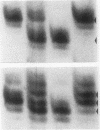Abstract
Human properdin deficiency is an X-linked disorder strongly predisposing to meningococcal disease which has been recorded in over 50 cases of various ethnic origins. Immunochemically, total deficiency (type I), partial deficiency (type II), and deficiency due to a dysfunctional molecule (type III) can be differentiated. It is therefore most likely that the causative molecular defects will show considerable genetic heterogeneity. Analysis of the properdin locus at Xp11.3-Xp11.23 has led to the characterization of two polymorphic (dC-dA)n.(dG-dT)n repeats located approximately 15 kb downstream from the structural gene. Three families (two Scottish Caucasoid, one Tunisian Sephardic) with seven deficient individuals were investigated immunochemically and using a nonradioisotopic polymerase chain reaction-based method for microsatellite detection. Probable and definite carriers frequently showed properdin levels which were in the normal range. No recombinants between the microsatellite loci and properdin deficiency were detected, thus allowing identification of the defective allele through the generations in all three pedigrees. Haplotyping for these highly polymorphic microsatellites in close physical linkage to the properdin gene can provide rapid and nonradioactive detection of carrier status and prenatal diagnosis without extensive sequencing analysis.
Full text
PDF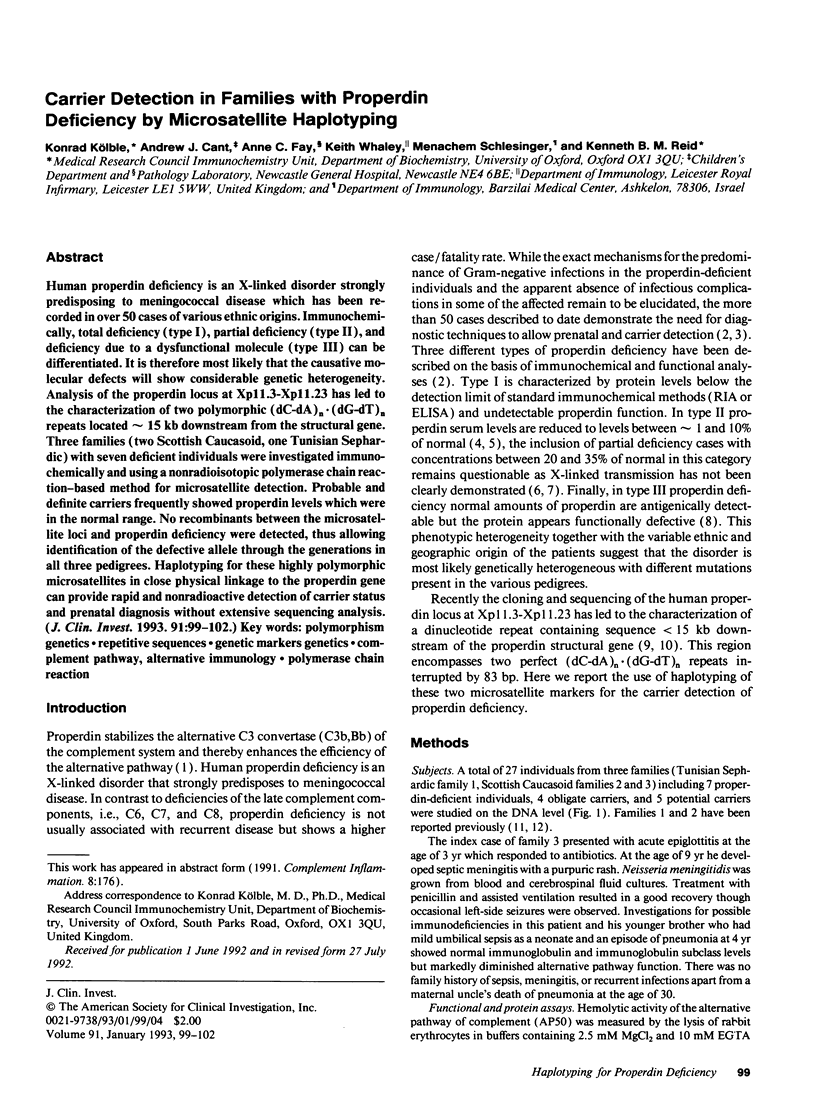
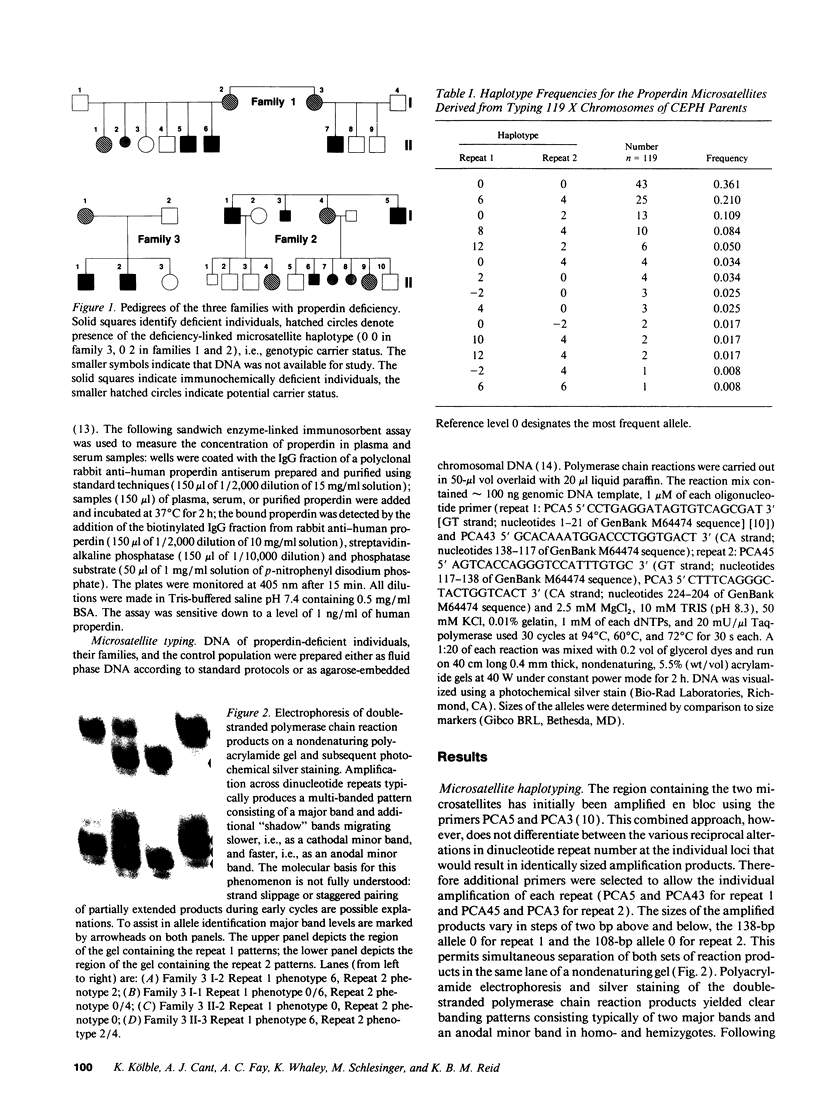
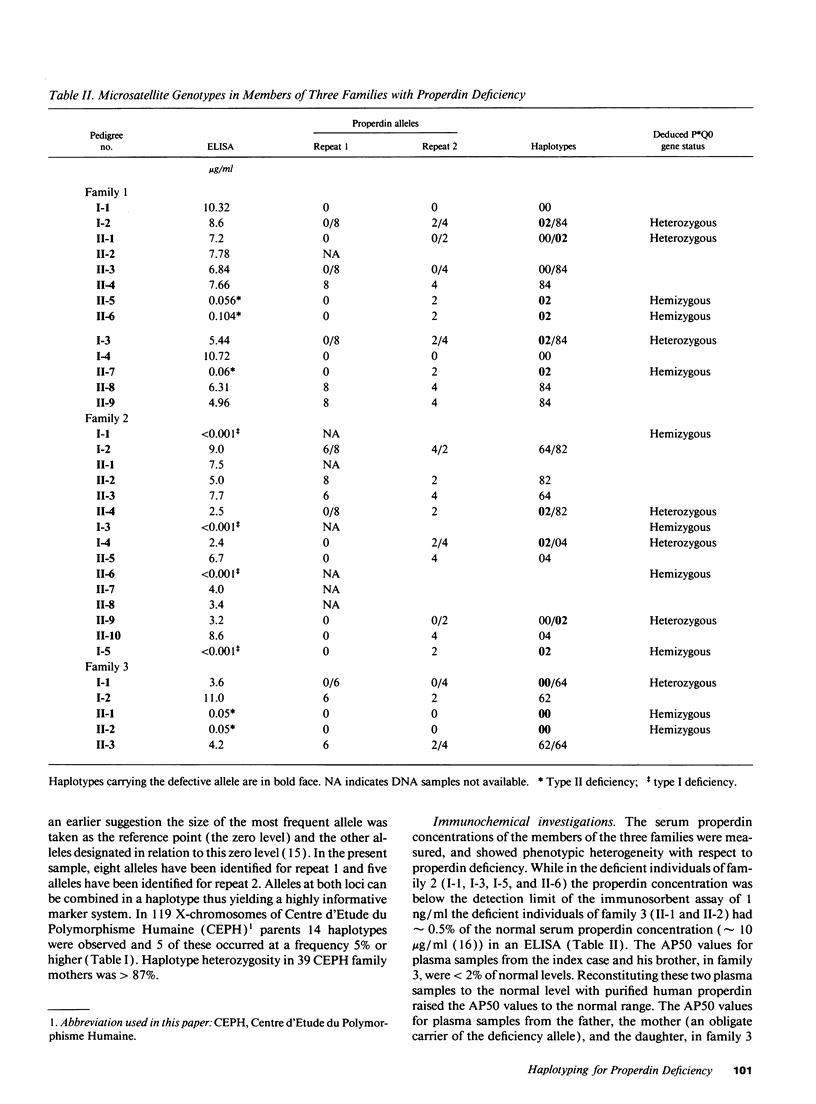
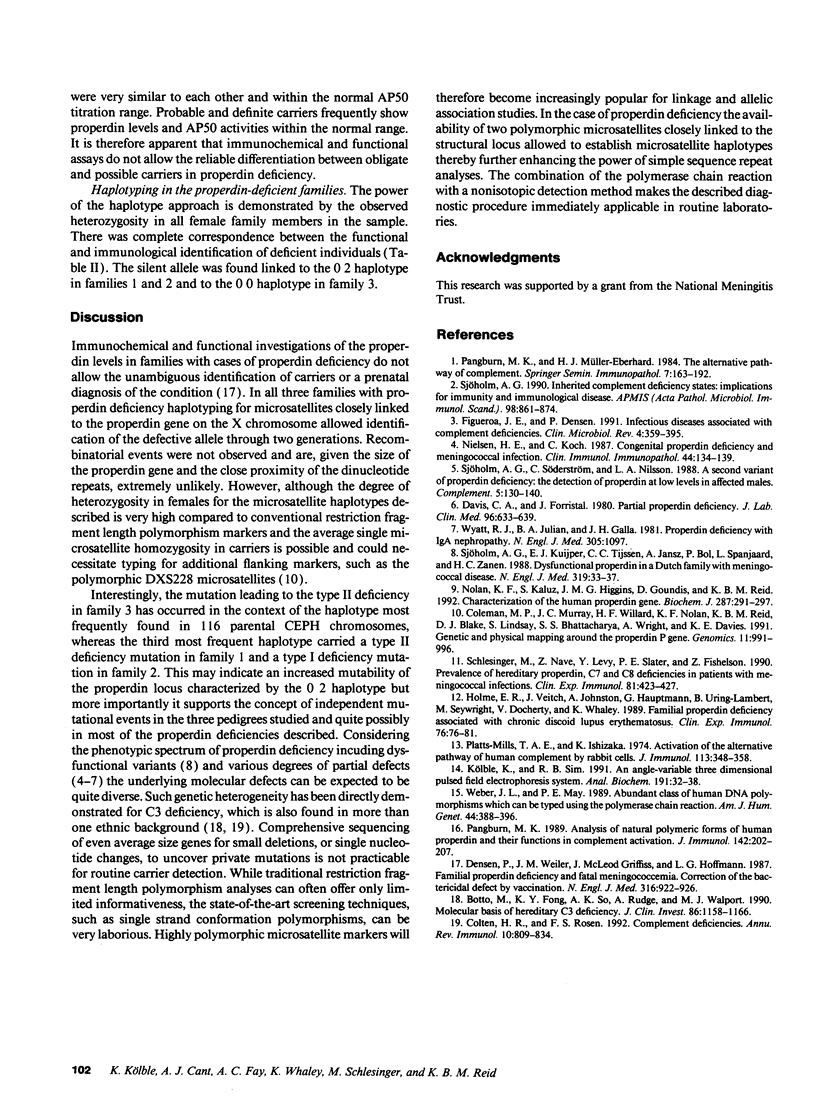
Images in this article
Selected References
These references are in PubMed. This may not be the complete list of references from this article.
- Botto M., Fong K. Y., So A. K., Rudge A., Walport M. J. Molecular basis of hereditary C3 deficiency. J Clin Invest. 1990 Oct;86(4):1158–1163. doi: 10.1172/JCI114821. [DOI] [PMC free article] [PubMed] [Google Scholar]
- Coleman M. P., Murray J. C., Willard H. F., Nolan K. F., Reid K. B., Blake D. J., Lindsay S., Bhattacharya S. S., Wright A., Davies K. E. Genetic and physical mapping around the properdin P gene. Genomics. 1991 Dec;11(4):991–996. doi: 10.1016/0888-7543(91)90024-9. [DOI] [PubMed] [Google Scholar]
- Colten H. R., Rosen F. S. Complement deficiencies. Annu Rev Immunol. 1992;10:809–834. doi: 10.1146/annurev.iy.10.040192.004113. [DOI] [PubMed] [Google Scholar]
- Davis C. A., Forristal J. Partial properdin deficiency. J Lab Clin Med. 1980 Oct;96(4):633–639. [PubMed] [Google Scholar]
- Densen P., Weiler J. M., Griffiss J. M., Hoffmann L. G. Familial properdin deficiency and fatal meningococcemia. Correction of the bactericidal defect by vaccination. N Engl J Med. 1987 Apr 9;316(15):922–926. doi: 10.1056/NEJM198704093161506. [DOI] [PubMed] [Google Scholar]
- Figueroa J. E., Densen P. Infectious diseases associated with complement deficiencies. Clin Microbiol Rev. 1991 Jul;4(3):359–395. doi: 10.1128/cmr.4.3.359. [DOI] [PMC free article] [PubMed] [Google Scholar]
- Holme E. R., Veitch J., Johnston A., Hauptmann G., Uring-Lambert B., Seywright M., Docherty V., Morley W. N., Whaley K. Familial properdin deficiency associated with chronic discoid lupus erythematosus. Clin Exp Immunol. 1989 Apr;76(1):76–81. [PMC free article] [PubMed] [Google Scholar]
- Kölble K., Sim R. B. An angle-variable three-dimensional pulsed field gel electrophoresis system. Anal Biochem. 1991 Jan;192(1):32–38. doi: 10.1016/0003-2697(91)90178-v. [DOI] [PubMed] [Google Scholar]
- Nielsen H. E., Koch C. Congenital properdin deficiency and meningococcal infection. Clin Immunol Immunopathol. 1987 Aug;44(2):134–139. doi: 10.1016/0090-1229(87)90060-2. [DOI] [PubMed] [Google Scholar]
- Nolan K. F., Kaluz S., Higgins J. M., Goundis D., Reid K. B. Characterization of the human properdin gene. Biochem J. 1992 Oct 1;287(Pt 1):291–297. doi: 10.1042/bj2870291. [DOI] [PMC free article] [PubMed] [Google Scholar]
- Pangburn M. K. Analysis of the natural polymeric forms of human properdin and their functions in complement activation. J Immunol. 1989 Jan 1;142(1):202–207. [PubMed] [Google Scholar]
- Pangburn M. K., Müller-Eberhard H. J. The alternative pathway of complement. Springer Semin Immunopathol. 1984;7(2-3):163–192. doi: 10.1007/BF01893019. [DOI] [PubMed] [Google Scholar]
- Platts-Mills T. A., Ishizaka K. Activation of the alternate pathway of human complements by rabbit cells. J Immunol. 1974 Jul;113(1):348–358. [PubMed] [Google Scholar]
- Schlesinger M., Nave Z., Levy Y., Slater P. E., Fishelson Z. Prevalence of hereditary properdin, C7 and C8 deficiencies in patients with meningococcal infections. Clin Exp Immunol. 1990 Sep;81(3):423–427. doi: 10.1111/j.1365-2249.1990.tb05350.x. [DOI] [PMC free article] [PubMed] [Google Scholar]
- Sjöholm A. G. Inherited complement deficiency states: implications for immunity and immunological disease. APMIS. 1990 Oct;98(10):861–874. doi: 10.1111/j.1699-0463.1990.tb05008.x. [DOI] [PubMed] [Google Scholar]
- Sjöholm A. G., Kuijper E. J., Tijssen C. C., Jansz A., Bol P., Spanjaard L., Zanen H. C. Dysfunctional properdin in a Dutch family with meningococcal disease. N Engl J Med. 1988 Jul 7;319(1):33–37. doi: 10.1056/NEJM198807073190106. [DOI] [PubMed] [Google Scholar]
- Sjöholm A. G., Söderström C., Nilsson L. A. A second variant of properdin deficiency: the detection of properdin at low concentrations in affected males. Complement. 1988;5(3):130–140. doi: 10.1159/000463047. [DOI] [PubMed] [Google Scholar]
- Weber J. L., May P. E. Abundant class of human DNA polymorphisms which can be typed using the polymerase chain reaction. Am J Hum Genet. 1989 Mar;44(3):388–396. [PMC free article] [PubMed] [Google Scholar]
- Wyatt R. J., Julian B. A., Galla J. H. Properdin deficiency with IgA nephropathy. N Engl J Med. 1981 Oct 29;305(18):1097–1097. doi: 10.1056/NEJM198110293051827. [DOI] [PubMed] [Google Scholar]



